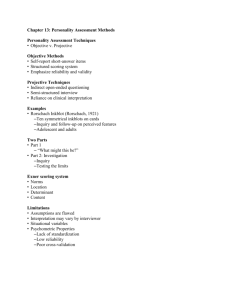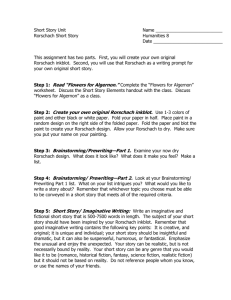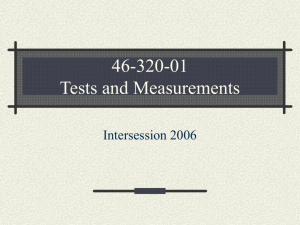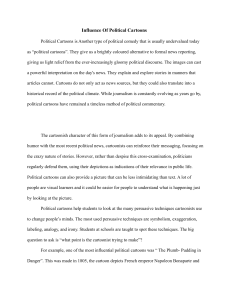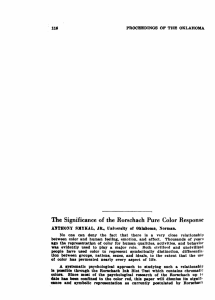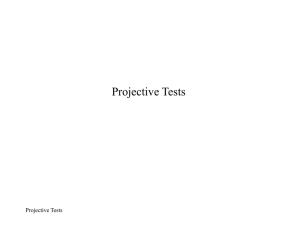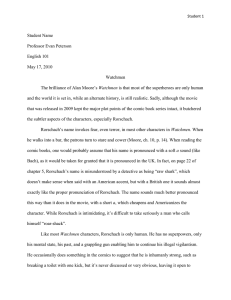The Rorschach Test
advertisement
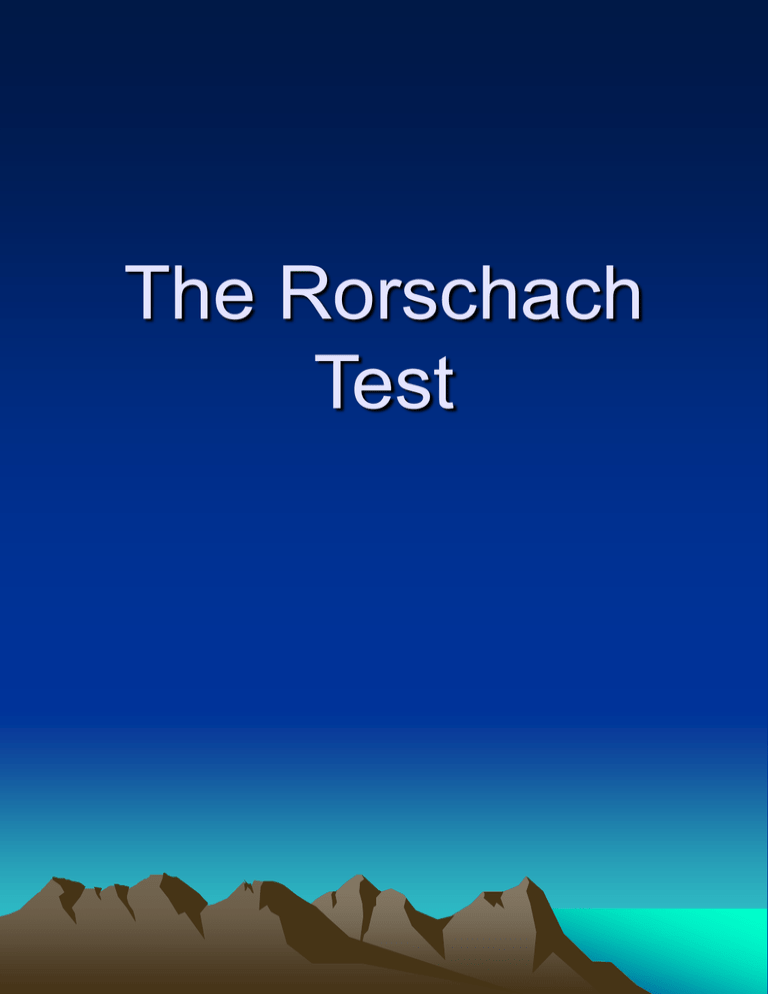
The Rorschach Test The Projective Hypothesis Responses to ambiguous stimuli will reveal aspects of personality including drives, motives, defenses, emotional style, and cognitive processes. Advantages of Projective Tests • Less obvious, harder to fake • May tap underlying (unconscious) psychological processes • May be effective with guarded patients and kids • May help us understand disorders in which symptoms are not immediately present Disadvantages of Projective Tests • • • • Reliability and validity Cross-cultural issues Complex scoring systems Cumbersome, time-consuming Uses of the Rorschach • Describes perceptual-cognitive aspects of the individual • Elicits need states that are projected onto the blots • Gives info on strengths and weaknesses Limitations of the Rorschach • Diagnostic decision-making • Treatment planning • Predicting behavior Administering the Rorschach • • • • Introduction Free association Inquiry (Then lots and lots of coding and scoring) What Gets Interpreted? • • • • • • Location Content Determinants Form quality Special scores Structural summary Location Where does the client see what she sees? • W Whole blot • D Common detail • Dd Uncommon detail • S White space Content • Human • Animal • Other – Idiosyncratic – Morbid – Aggressive movement Determinants • • • • Form (F) Chromatic color (C, CF, FC) Achromatic color (C’, C’F, FC’) Light-dark features – Shading (Y, YF, FY) – Texture (T, TF, FT) – Vista (V, VF, FV) • Movement -Human (M) vs. animal (FM) vs. inanimate (m) - Active (a) vs. Passive (p) Form Quality + Superior (good form, unusually well-developed) o Ordinary (good form, nothing special) u/w Weak/unusual (poor form, but plausible) Minus (poor form, grossly distorted) Special Scores • • • • Unusual verbalizations Fabulized Combination Contamination Perseveration Structural Summary • Completed after the Sequence of Scores • A form in which totals across the cards are calculated • Includes many, varied ratios percentages and derivations • Rorschach interpretation is based on this structural summary Ratios, Percentages & Derivations • L=(sum of pure F)/(sum of nonpure F) • EB= M : Sum C • EA= M + Sum C • eb= Fm + m : T + Y + V + C’ • ep= Fm + m + T + Y + V + C’ • W:M • F+% Rorschach Interpretation • Involves Putting the structural summary together with clinical data • Areas of interest: – Cognitive style – Emotional style – Ego strength and coping – Interpersonal style Critique • CS norms are poor • May not work well on minorities • Score reliability is poor for about half the scores • Test-retest r is low or unknown for many scores • Number of responses influences scores • Rorschach scores don’t hang together • Low predictive and incremental validity
